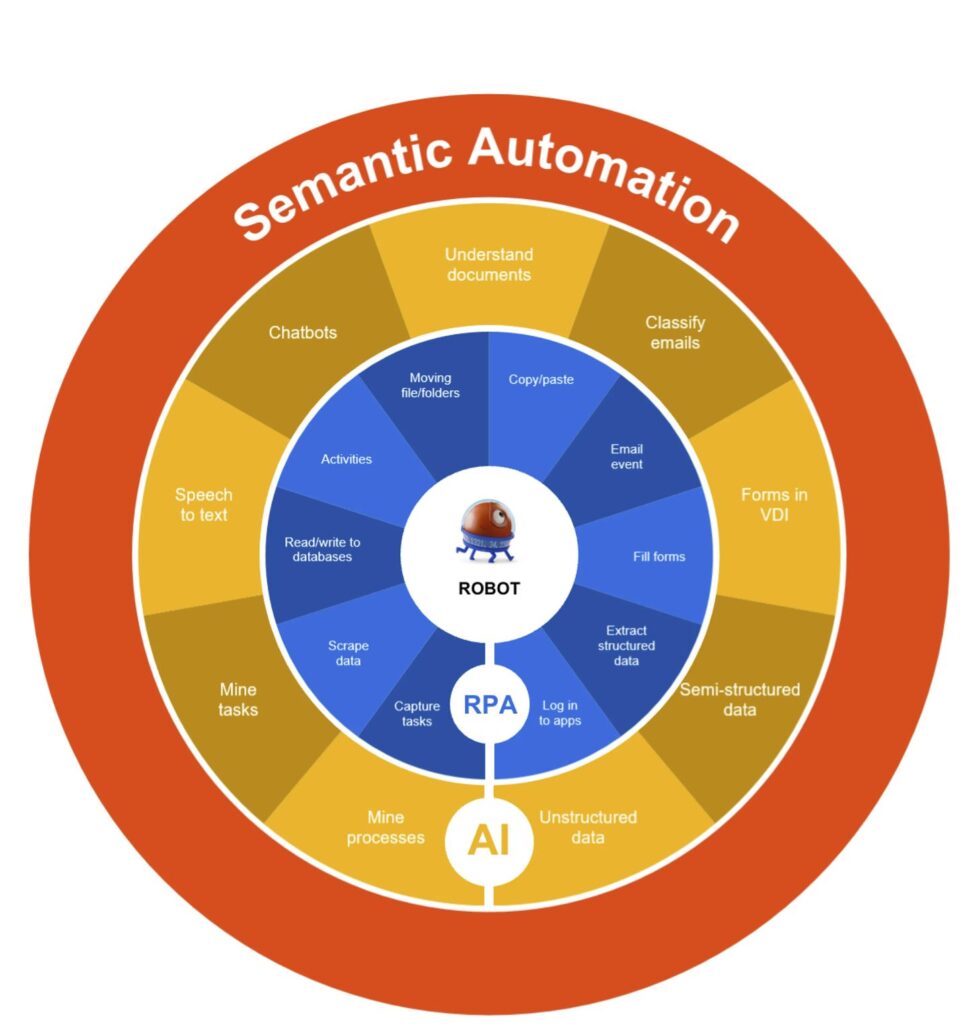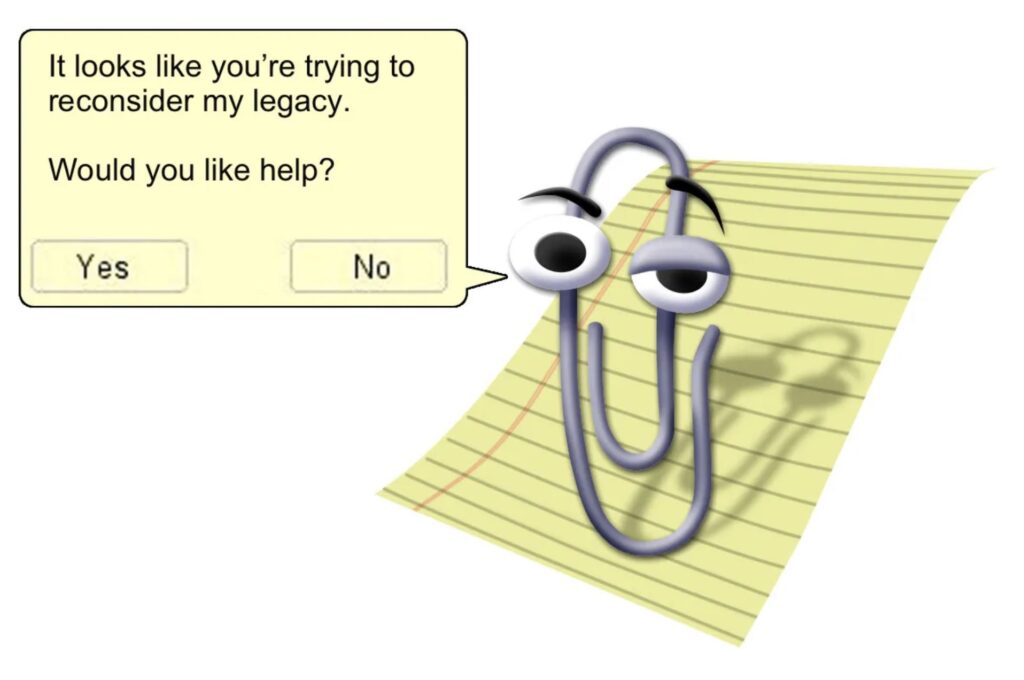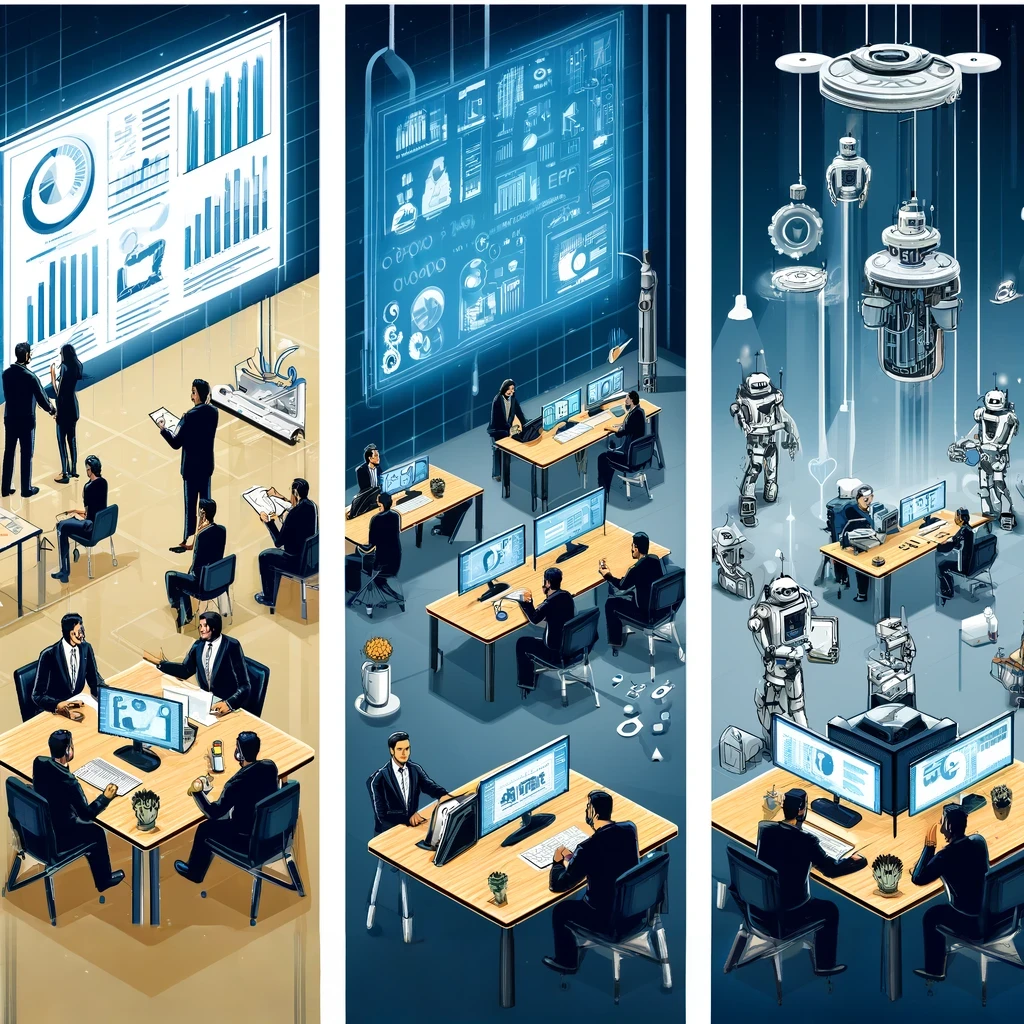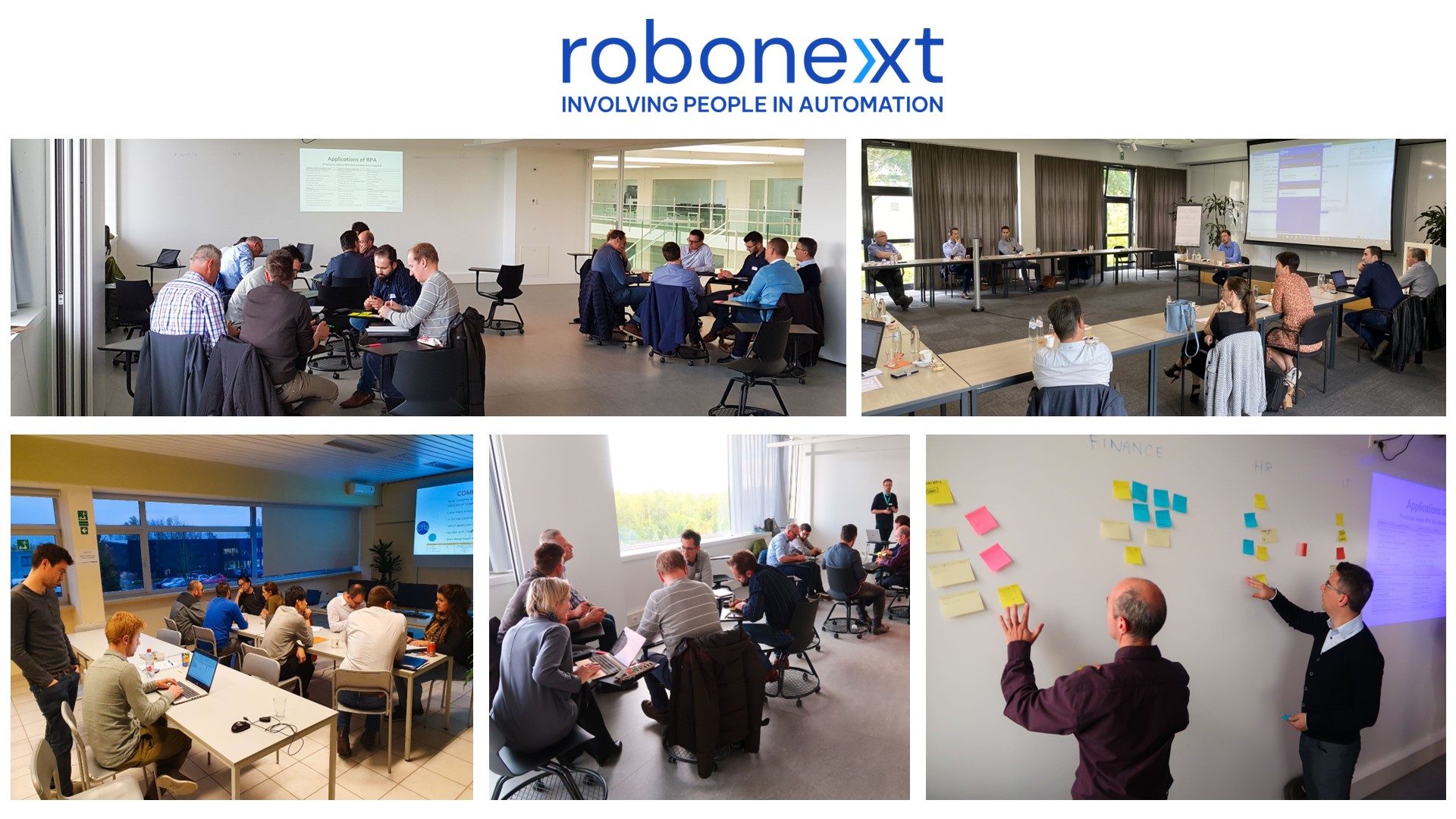Over the last years, quite a lot of new automation concepts have emerged: Cognitive Automation, Intelligent Automation, Hyperautomation, Hyper Intelligent Automation, Extreme Automation – to name just a few. Every year, some automation vendor or industry analyst coins a new term to express how Robotic Process Automation (RPA) is evolving and, conveniently, to create some marketing buzz along the way. Recently, a new term has emerged: Semantic Automation. What is Semantic Automation and why should you care?
What is Semantic Automation?
The word semantic is derived from the Ancient Greek word σημαντικός (sēmantikós, “significant”), and refers to “meaning”. Simply put, Semantic Technology is able to understand the meaning of what it is doing.
Robotic Process Automation (RPA) is a software technology that allows you to automate repetitive processes. A traditional RPA robot is a digital worker that performs repetitive, administrative tasks such as processing orders, invoices or updating master data. Basically, RPA robots do not have any semantic understanding of what they are doing whatsoever. The RPA robot will follow a rule-based workflow, for example by processing documents, using application screens or copy-pasting data between various software systems. Under the hood, an RPA robot is essentially an automation script that contains a sequence of IF-THEN-ELSE statements. There can be quite a lot of them, thus enabling RPA robots to automate business processes that contain various exception scenario’s such as business exceptions (e.g. “the required customer ship-to address cannot be found on this order form”) as well as system exceptions (e.g. “SAP screen is not loading”).
Limitations of RPA without semantic understanding
The inability of a traditional RPA robot to understand the task that it is performing, results in some key limitations of this technology:
- First of all, RPA can be brittle to changes in the task environment. If something changes in the process or in the robot’s environment, the robot is not able to understand this change in the same way as a human does. For example, it could be that after an SAP update, a new button appears in the user interface, which changes the layout of screen and the position of the other buttons. Depending on how the RPA robot is programmed, it could be that the robot cannot find the right buttons and input fields anymore after this update. The result is that robot might not work anymore and needs some tweaking, resulting in ongoing monitoring and maintenance needs to keep the RPA robot functioning correctly.
- For an RPA developer, programming an RPA robot requires explicitly spelling out all the steps that the robot should follow. The robot has no understanding of the task that it will perform, so the RPA developer should exhaustively program all the steps into the robot’s step-by-step automation script. A robot does not know that after extracting the delivery address from an order, it should enter this field in the corresponding “ship-to” entry field in the ERP system, unless we explicitly teach it where to find this information on the document and with which elements of the Graphical User Interface of the ERP system it should interact. The result is that significant development efforts are required to program an RPA robot . The more exceptions that can occur, the longer the robot code becomes, up to a point that a very complex process with lots of exceptions requires too much effort and the game is not worth the candle.
What happens when we add semantic understanding to RPA?
An RPA robot with semantic understanding will not only perform its task, but will also understand the meaning of what it is doing. It does not only see the data, the application screens and the documents, but also understand the context in which it is working.
For example, it will immediately understand that the document it uses as input to its process is an order form, with as key information fields to be extracted the usual suspects such as ship-to address, product codes, quantities and incoterms. We’re not required to explicitly point out the location of each of these information fields on the order, but thanks to its prior understanding of such documents, the RPA robot can extract the relevant information much faster and more accurately.
Also, it will immediately interpret the user interface of the ERP system, thereby allowing it to quickly and intuitively map the information fields from the pdf order form to the corresponding fields in the UI of the ERP. Thus, we can see that Semantic Understanding for RPA robots is an enabler of the “Ultimate Copy-Paste” experience.
Moreover, based on the robot’s understanding that it is executing an order entry process, it can efficiently and effectively handle some common exception scenario’s that can occur in this type of business process (e.g. product codes unknown, required delivery date is infeasible, etc) and it can also cope in a more robust way with changes in the process (e.g. input screen of the ERP system is updated).
Such capabilities will make RPA robots much more reliable and will also dramatically reduce the development and maintenance efforts of RPA. That’s why semantic automation can be a real game changer for RPA, by dramatically widening its scope of applicability.
The current state of Semantic Automation
Semantic Automation is embraced by UiPath, the market and technology leader in RPA. The term was mentioned in October 2021, by Daniel Dines, UiPath’s co-founder and CEO in his keynote of FORWARD IV, its yearly automation conference, as a giant leap forward for automation. Semantic Automation will not happen overnight but is a gradual evolution. There are already some capabilities in UiPath’s automation platform that enable Semantic Automation, such as Document Understanding (AI-powered document extraction), Task mining (AI-powered task analysis) and AI Center (enhance robots with machine learning).

And soon UiPath is expected to launch a new standalone product: “Clipboard AI“. Clipboard AI is a tool for business users that takes copy/paste to the next level. It enables to intelligently transfer data between documents, spreadsheets, and apps. It understands the structures of content and automatically inserts critical data into the right places.
We expect that also other vendors in the automation space will follow this evolution and will compete to create RPA robots that can understand the meaning of what they are doing. Maybe at some point, Microsoft might even revive Clippy, its intelligent virtual assistant, “one of the worst software design blunders in the annals of computing”??

But finally, let’s just hope that Semantic Automation will never reach the level that RPA robots start to realize how boring their work really is 🙂






